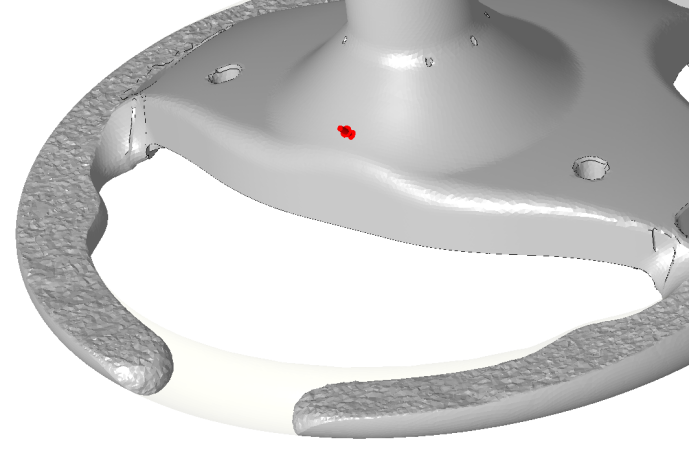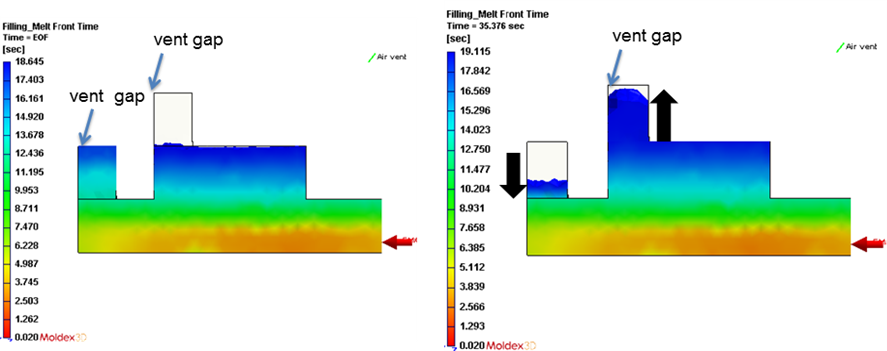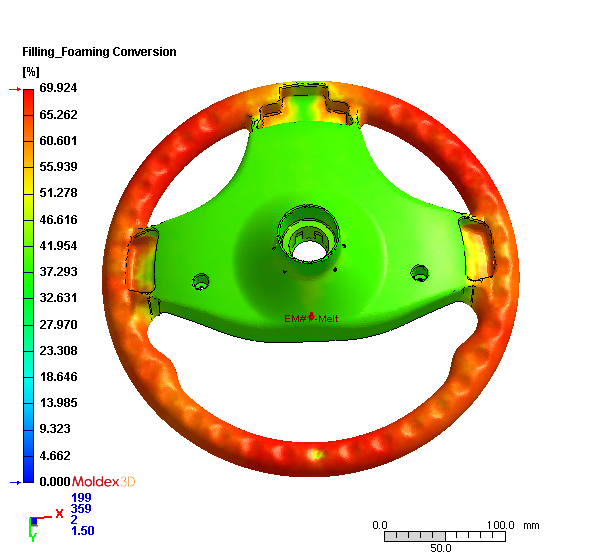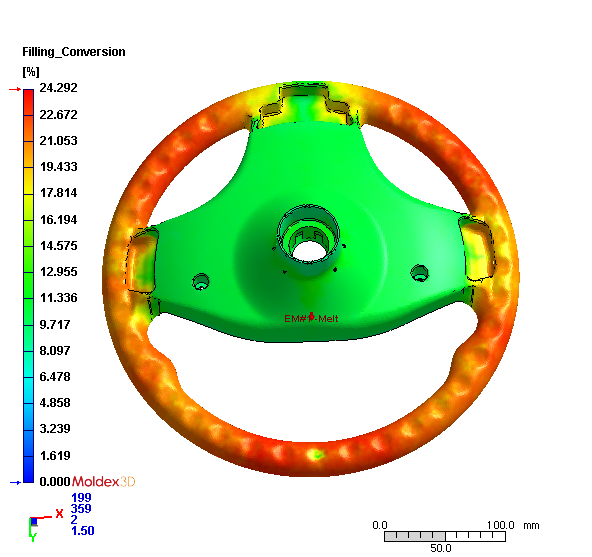Why Chemical Foaming Molding Simulation?
Chemical Foaming Molding (CFM) is a molding process that full-fill the cavity with gas produced by chemical reactions. Polyurethane (PU) foam molding is the most common molding process in chemical foaming molding. According to its mechanical properties, PU foam products can be divided into two categories: rigid and flexible foam. Rigid foam cannot be reinstated under deformation, but flexible foam have the ability to their original state after apply a deformation. Polyurethanes can enables manufacturers to reduce weight, save cost, increased comfort, resist corrosion, insulate heat, and absorb sound.

Challenges
- Difficulty of processing control (control of state of thermodynamic instability)
- Unknown of foaming process (temperature and pressure variation)
- Development of reliable CAE technology
What Can Moldex3D Do?
- Provide foaming kinetics for different by-products in chemical foaming process
- Provide mold rotation process
- Simulate the filling behavior during molding and predict the final part weight.
- Estimate cell size & cell density for evaluating the product weight loss ratio
- Optimize the design of gate location by analyzing through gravity and venting location

- Visualize density variation by considering the foaming kinetics
- Evaluate the effected results of foaming conversion, and melt curing conversion
Foaming Conversion
Conversion
Applicable Industries
- Automotive industry (dashboard, steering wheel, seat)
- Refrigeration industry (refrigerator insulation layer, insulation sandwich)
- Footwear industry (soles)
- Medical industry (bed mattresses)
- Building and Construction
Applicable Moldex3D Package
- Moldex3D Professional Package
- Moldex3D Advanced Package

